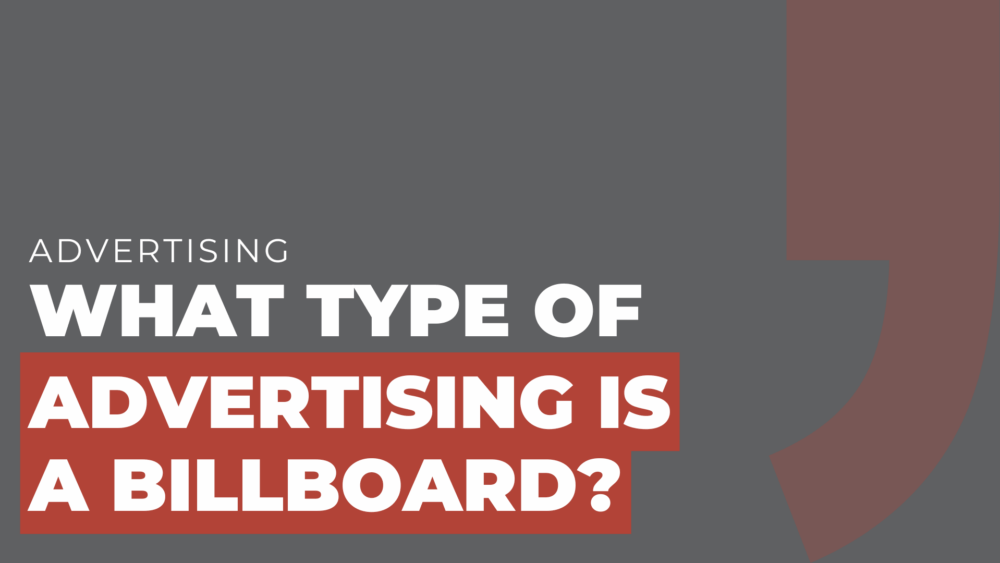Digital is everything these days.
Does that mean that everything has to be digital?
Is billboard advertising still relevant?
What type of advertising is a billboard? And does it hold any significance in the ever-evolving realm of advertising?
Billboard is considered OOH (Out of Home) advertising, meaning it is a type of advertisement that reaches consumers while they are outside their homes.
This includes billboards, posters, bus shelters, and other outdoor signage.
But why use billboard advertising when there are so many digital options available?
Is it still effective in today’s world?
The answer is YES.
Billboard advertising is still very effective.
Is a billboard conventional advertising?
Yes, billboard advertising falls under the category of conventional advertising.
This is part of an ATL (above the line) marketing strategy, meaning the goal is broad reach.
This refers to traditional forms of advertising that have been used for decades, such as TV commercials, radio ads, and print advertisements.
While digital marketing has definitely taken over in recent years, conventional advertising still holds its own in terms of reach and effectiveness.
Is billboard advertising effectiveness legit?
Despite the rise of digital marketing, billboard advertising continues to be a powerful tool in the arsenal of advertisers.
Here’s why:
1. Massive reach
Billboards are seen by anybody who walks by and looks.
This includes drivers, commuters, pedestrians, and even passersby who are just looking around.
Depending on the location of the billboard, it has the potential to reach thousands or even millions of people every day, in every age group and walk of life.
2. Impactful visuals
One of the key advantages of billboards is their ability to deliver visually captivating messages.
With their large formats and eye-catching designs, billboards have the power to leave a lasting impression on viewers.
Think about iconic billboards like Coca-Cola’s Times Square billboard or Nike’s “Just Do It” campaign.
These examples demonstrate how a well-executed billboard can create a memorable brand experience.
3. Local targeting
Unlike some forms of advertising, billboards allow for precise geographical targeting.
Advertisers can strategically place billboards in specific areas to reach their target audience.
For instance, a local restaurant might choose to advertise on billboards near its location to attract nearby customers.
This can be extremely valuable if you are trying to get recognized in your area specifically.
4. Complementary to digital marketing
Billboards can work hand-in-hand with digital marketing efforts.
By incorporating QR codes or social media handles on billboards, advertisers can seamlessly bridge the gap between offline and online experiences.
This integration enables consumers to engage with brands on various platforms, extending the reach and impact of the advertising campaign.
Memorable billboard examples
To illustrate the power of billboards, let’s take a look at some memorable examples:
The “Got Milk?” campaign
This iconic billboard campaign featured celebrities with milk mustaches, creating a buzz and driving awareness for the dairy industry.
The Apple “Think Different” campaign
Apple’s minimalist and thought-provoking billboards showcased influential figures like Albert Einstein and Mahatma Gandhi, capturing the essence of the brand’s innovative spirit.
A Perfect Partnership
hile digital advertising continues to dominate the marketing landscape, billboards remain a valuable and effective form of advertising.
With their ability to reach a massive audience, deliver impactful visuals, allow for local targeting, and complement digital marketing efforts, billboards continue to play an integral role in successful marketing strategies.
Take a few minutes to consider whether billboards could improve your brand’s advertising strategy.


Comments are closed.